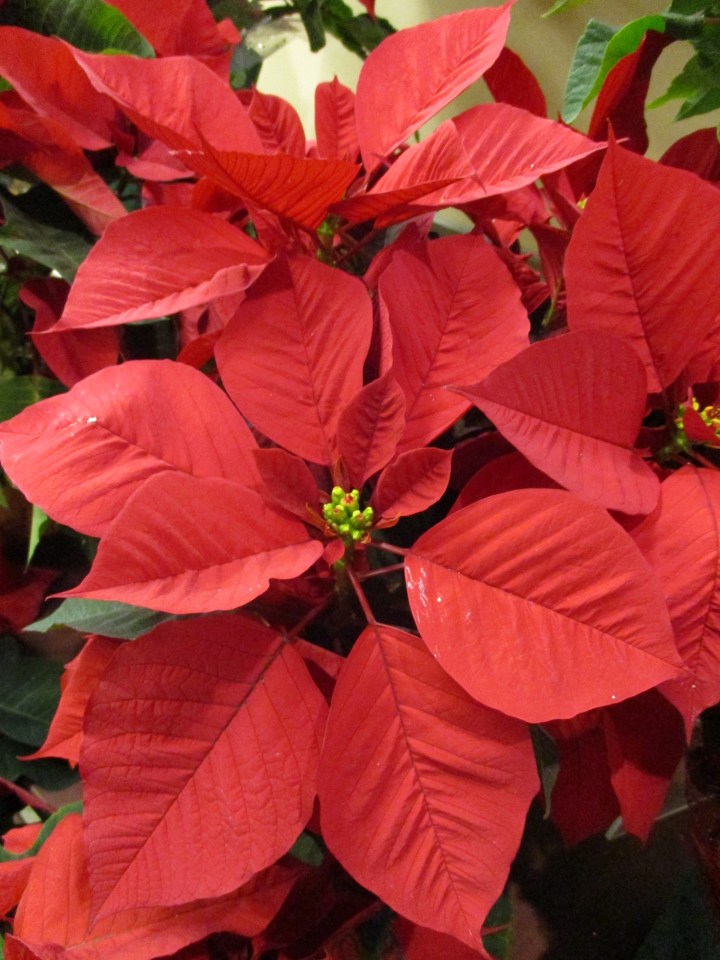 Many of us already understand that daisies, sunflowers, asters and all related flowers are composite flowers, which bloom as many tiny flowers clustered tightly together to form what appears to be significantly larger single flowers. Distended ‘ray’ florets around the edges imitate petals that other types of flowers are equipped with. It is like one stop shopping for pollinators craving nectar.
Many of us already understand that daisies, sunflowers, asters and all related flowers are composite flowers, which bloom as many tiny flowers clustered tightly together to form what appears to be significantly larger single flowers. Distended ‘ray’ florets around the edges imitate petals that other types of flowers are equipped with. It is like one stop shopping for pollinators craving nectar.
Many other plants have developed comparably ingenious techniques for facilitating what they need to do. Flowers are the more common beneficiaries of their creativity. Fruits, leaves, stems and roots have also been modified out of necessity. For example, the colorful bracts around tiny poinsettia and bougainvillea flowers are modified leaves that pretend to be petals to attract pollinators.
We think of strawberries, pineapples and figs as fruit. Strawberry fruits are actually the small specks on the outside that resemble seeds. The sweet and juicy part that suspends these fruits is a modified stem. Each ‘eye’ of a pineapple is a swollen flower, that is fused with flowers around it. Tiny fig flowers bloom and produce seed all within the fleshy floral structure that is eaten like fruit.
Some types of acacia trees have no real leaves. Their foliage is comprised of distended petioles (leaf stems) known as ‘phyllodes’, but without the leaves that petioles normally support. Juvenile leaves that actually look like lacy acacia leaves do not last long. Makrut lime has big phyllodes too, but in conjunction with leaves, which is why they seem to have double leaves joined end to end.
Cacti and the euphorbs (poinsettia relatives) that resemble them are among the most deceptive of plants. Euphorbs that have both recognizable leaves and thorns provide hints about how they work, since some tufts of thorns and spines also have leaves. Each tuft is a node. Small bristly spines are modified leaves. Larger and stouter thorns are modified axillary stems. A few stems develop into limbs or segments. Without leaves, the fleshy green stems do all the work of photosynthesis.
My Poinsettia has those red bracts but above those, more small green leaves are growing – maybe they will also turn red?
LikeLiked by 1 person
The green ones are just new leaves that will stay green. The small yellow flowers are gone. Since the red bracts are technically leaves, they are in no hurry to shed, but will eventually as the lower foliage gets replaced higher up. If you can get it to bloom again, it will do so above the new foliage. It is not easy to get them to bloom again, and when they do, the bracts are usually not very bright red or as big as when they were forced to bloom in greenhouses.
LikeLiked by 1 person
Great easy to understand explanation!
LikeLiked by 1 person
Thank you. It can be difficult to fit the information I want to write about into the limited space allowed by the weekly gardening column. I suppose I could write another article here where space is not so limited, but not so soon after this one
LikeLike
I’m fairly clear on bracts and fruits, but I was left pondering a bit about the cacti. Would pencil cactus (Euphorbia tirucalli ) be one of those plants whose stems carry out the work of photosynthesis? I’ve had that plant, and apart from the few tiny leaves that emerged occasionally, it seemed to be all stems, all the time.
LikeLiked by 1 person
Yes, although it is not a cacti, it functions like one. The green stems do all the photosynthesis.
LikeLiked by 1 person
I think I remember learning in a botany class that a strawberry is an “aggregate fruit”. Each of the seeds is called an achene. So strawberries must have composite flowers also?
LikeLiked by 1 person
The flowers have multiple ovaries, like blackberries and raspberries.
LikeLiked by 1 person
I like flowers that have tissue paper like petals, ok bracts like bourgainvilla, all your white flower photos, hibiscus.
Someone just gave me a star flower cactus 2 days ago. I realise is not a cactus but a succulent. Would you describe that as deceptive?
LikeLiked by 1 person
Well, no. That is merely a misunderstanding. Do you know the genus of this star flower cactus? Common names can be misleading. There are a few plants known as star flower cactus, and one happens to be a cactus. Others are aloes and euphorbs.
LikeLike